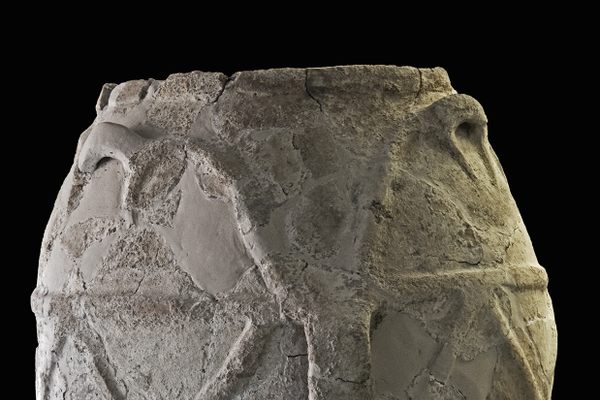Found: Ancient Non-Stick Pans
A pottery dump at Cumae reveals that red-slip pottery is the best to cook chicken in.

A shard of non-stick pottery (Photo: Marco Giglio)
Back in the heyday of Rome, a cookbook gave a point of cookware advice. Of all the pans available to Roman cooks, a certain type, made in the city of Cumae, were the best for making chicken stew.
Historians of Rome have long wondered: what pans might these have been exactly? But now a team from a university in Naples has found those perfect chicken stewing pans. In Cumae, Discovery News reports, the archaeologists have found “a dump site filled with internal red-slip cookware fragments.”

These 50,000 fragments were the discards of a pottery factory, and they feature a “thick internal red-slip coating” that would have made it harder for whatever was in the pot to adhere to its surface. In other words, these are age-old nonstick pans.
This discovery backs up a decades-old theory that the Cumae pans were the same as “Pompeian Red Ware,” a type of pottery with a similar red-slip coating. The pots found at Cumae and the pots found at Pompeii aren’t exactly the same, Discovery notes: they have a different clay mixture and the anti-adhesive coating of the Pompeii pottery is “of much lower quality.”
If Cumae pans were the Le Creuset of their day, perhaps the Pompeii pans were just cheap knock-offs? Either way, the theory holds up: red-slip pans were the ones that millennia-old cookbook was recommending. Now we finally know what pots savvy Roman cooks put their chicken in.
Bonus finds: Hundreds of AK-47s
Every day, we highlight one newly found object, curiosity or wonder. Discover something amazing? Tell us about it! Send your finds to sarah.laskow@atlasobscura.com.
Gastro Obscura covers the world’s most wondrous food and drink.
Sign up for our regular newsletter.
























Follow us on Twitter to get the latest on the world's hidden wonders.
Like us on Facebook to get the latest on the world's hidden wonders.
Follow us on Twitter Like us on Facebook